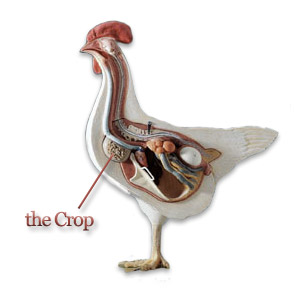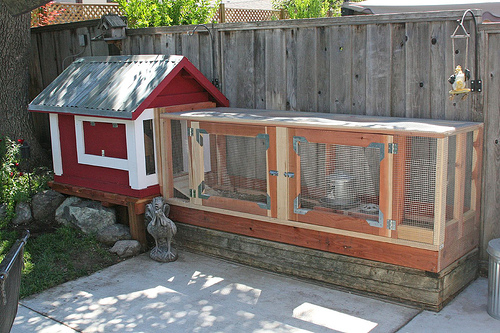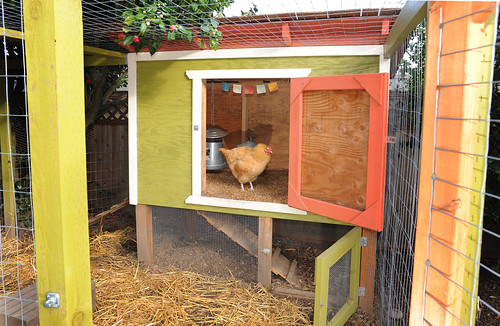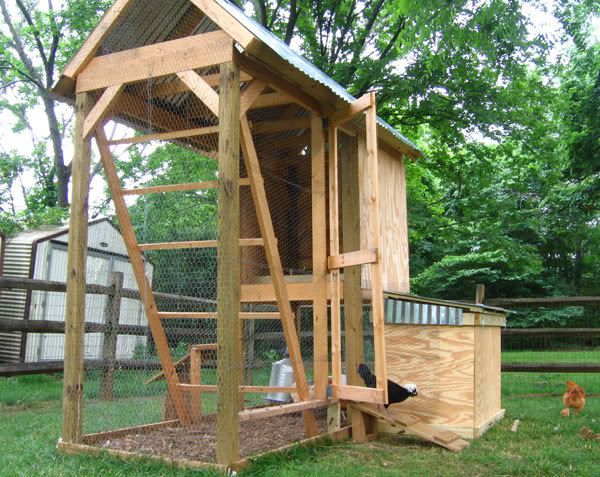If you’re only planning on keeping one or two chickens total, you might want to build a chicken hutch rather than building an entire chicken coop, since this will get the job done and be a much cheaper and less time consuming option. Some people will also consider building a hutch to place in their coop, so that’s something to think about as well.
If you choose to build a chicken hutch you’ll find that it’s much easier to take care of and that you’re able to find a good location in your yard for it very easily. For those who are also just getting started with raising chickens, this is usually the perfect option to choose.

Here is what you need to know if you want to build a chicken hutch.
Be Sure You Build A Good Sized Door
Since you need to give your chickens easy access inside and out of the hutch, it’s important that you make sure you’re building a good sized door.
Don’t make the mistake of building only a tiny door that the chickens struggle to get in and out. You’re better off creating a larger door and then attaching a wooden door flap that they can get in and out of.
This will help to keep them protected from predators still but allow for easier access on their part.
Make Sure It’s Raised Off The Ground
Second you also want to ensure that you’re raising the hutch off the ground. While chicken coops are built right on the ground, if you choose to build a chicken hutch you need to raise it off.
Usually you want it raised somewhere around a foot off the ground, but don’t be overly concerned if it isn’t exactly this measurement. As long as it’s not placed right on the floor and your chickens can access it with a ramp if it is higher, that shouldn’t be a problem at all.
Be Sure The Lid is Easy Opening For You
Finally, the last thing you must be doing is making sure that you can easily open the lid to give you easy access to the chickens if you need it and also for cleaning purposes. Since it is a much smaller place where your chickens are going to stay, if you aren’t cleaning it regularly you are going to run into problems with how it looks overall, so taking the time to clean it weekly is a very smart move.
If it’s harder for you to actually access the inside of the hutch though, the chances that you do decide to clean it regularly will be a great deal lower.
So be sure you’re keeping all of these points in mind as you decide to build a chicken hutch. By taking the correct action steps and having a good plan to follow throughout the building process; you'll have a great chicken hutch in no time.





